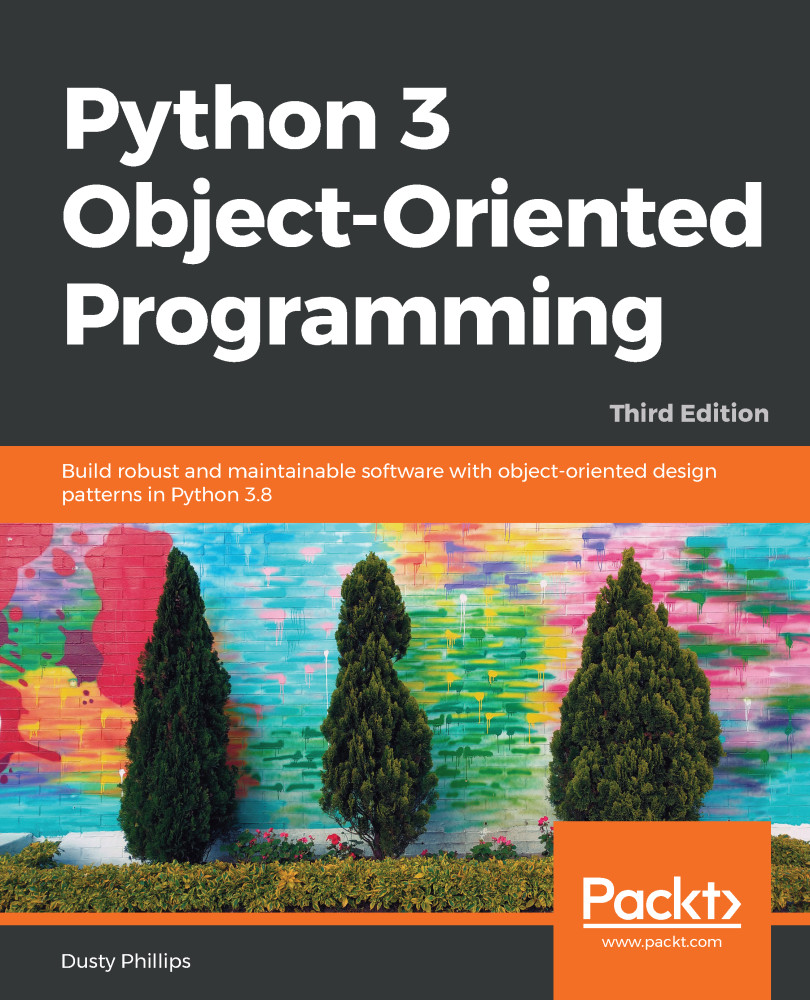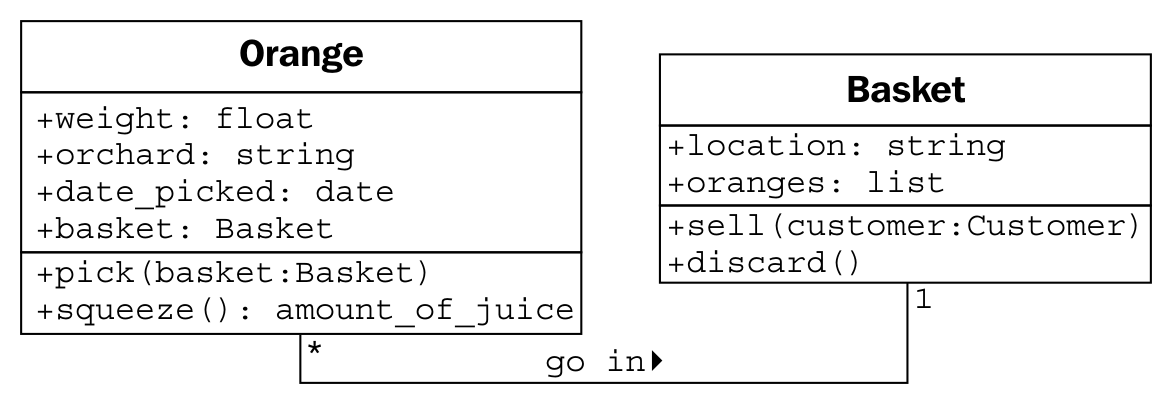Let's start with data. Data represents the individual characteristics of a certain object. A class can define specific sets of characteristics that are shared by all objects from that class. Any specific object can have different data values for the given characteristics. For example, the three oranges on our table (if we haven't eaten any) could each weigh a different amount. The orange class could have a weight attribute to represent that datum. All instances of the orange class have a weight attribute, but each orange has a different value for this attribute. Attributes don't have to be unique, though; any two oranges may weigh the same amount. As a more realistic example, two objects representing different customers might have the same value for a first name attribute.
Attributes are frequently referred to as members or properties. Some authors suggest that the terms have different meanings, usually that attributes are settable, while properties are read-only. In Python, the concept of read-only is rather pointless, so throughout this book, we'll see the two terms used interchangeably. In addition, as we'll discuss in Chapter 5, When to Use Object-Oriented Programming, the property keyword has a special meaning in Python for a particular kind of attribute.
In our fruit inventory application, the fruit farmer may want to know what orchard the orange came from, when it was picked, and how much it weighs. They might also want to keep track of where each Basket is stored. Apples might have a color attribute, and barrels might come in different sizes. Some of these properties may also belong to multiple classes (we may want to know when apples are picked, too), but for this first example, let's just add a few different attributes to our class diagram:
Depending on how detailed our design needs to be, we can also specify the type for each attribute. Attribute types are often primitives that are standard to most programming languages, such as integer, floating-point number, string, byte, or Boolean. However, they can also represent data structures such as lists, trees, or graphs, or most notably, other classes. This is one area where the design stage can overlap with the programming stage. The various primitives or objects available in one programming language may be different from what is available in another:
Usually, we don't need to be overly concerned with data types at the design stage, as implementation-specific details are chosen during the programming stage. Generic names are normally sufficient for design. If our design calls for a list container type, Java programmers can choose to use a LinkedList or an ArrayList when implementing it, while Python programmers (that's us!) might choose between the list built-in and a tuple.
In our fruit-farming example so far, our attributes are all basic primitives. However, there are some implicit attributes that we can make explicit—the associations. For a given orange, we might have an attribute referring to the basket that holds that orange.



 Free Chapter
Free Chapter



